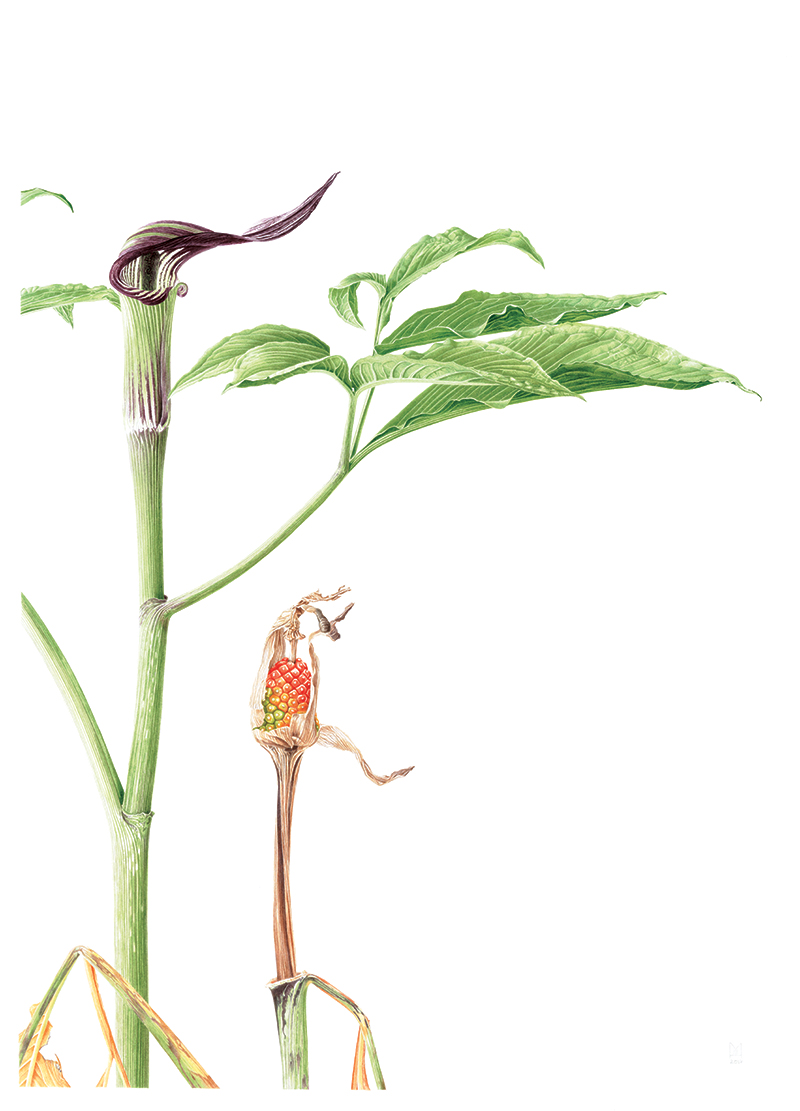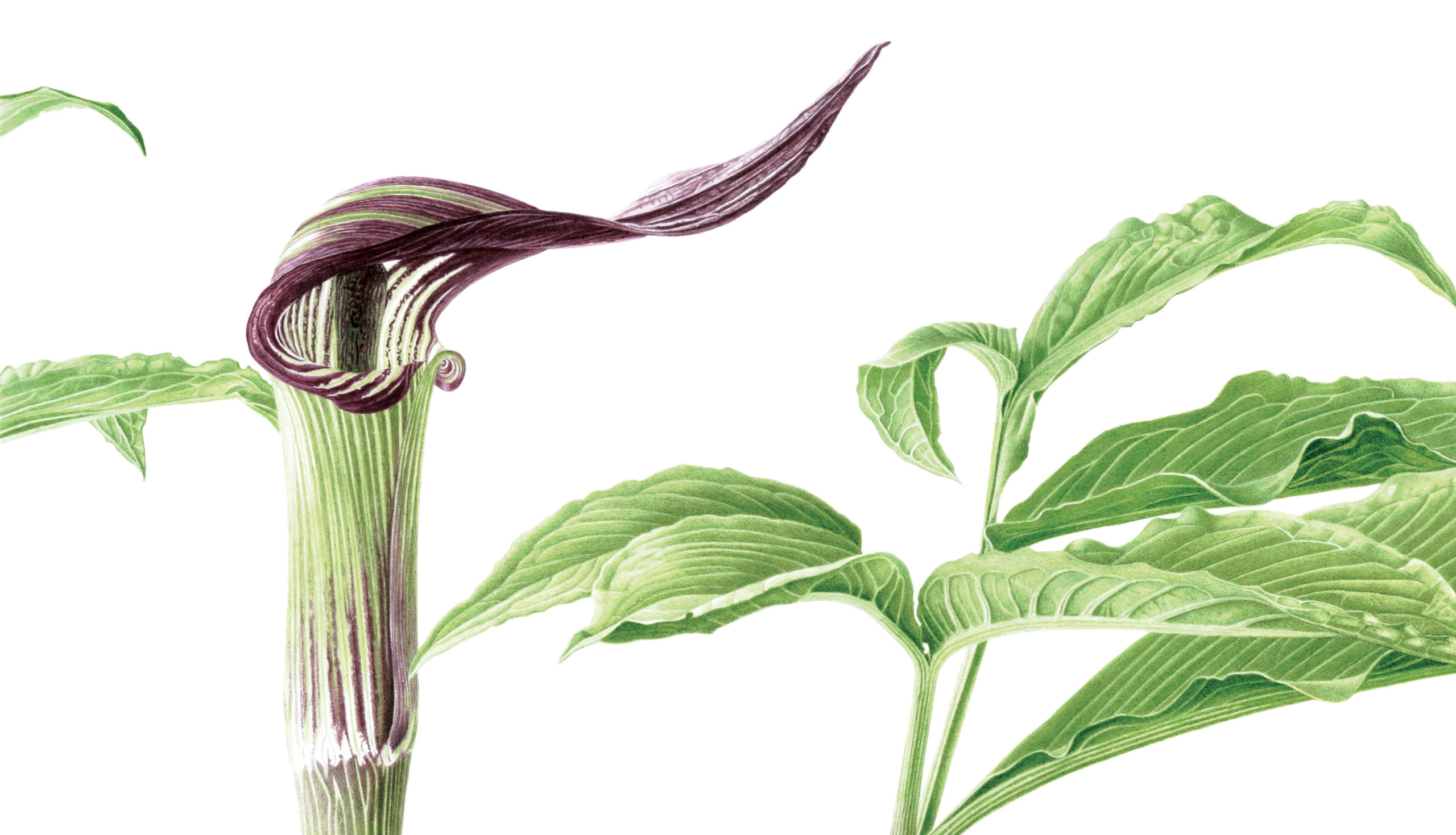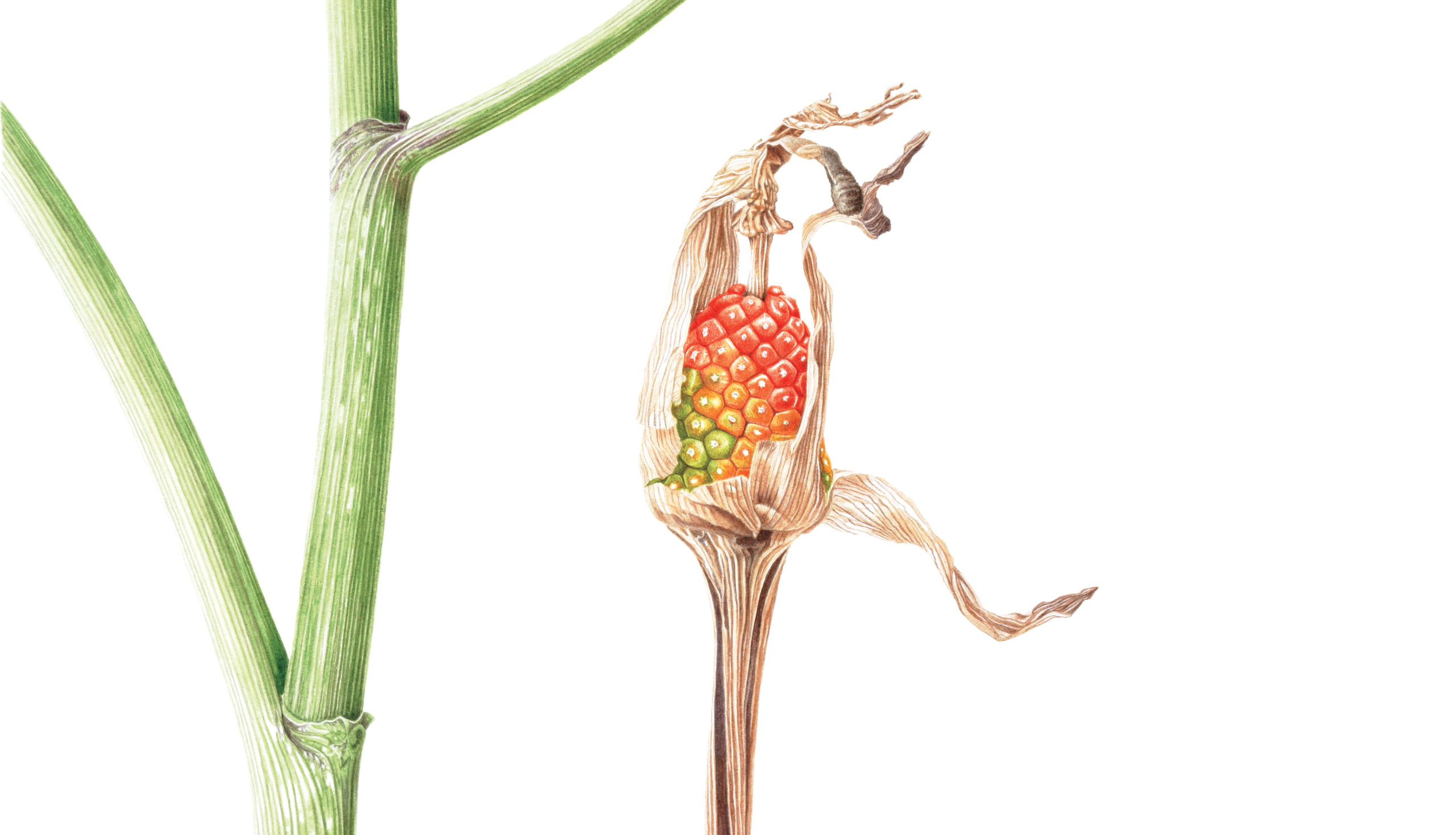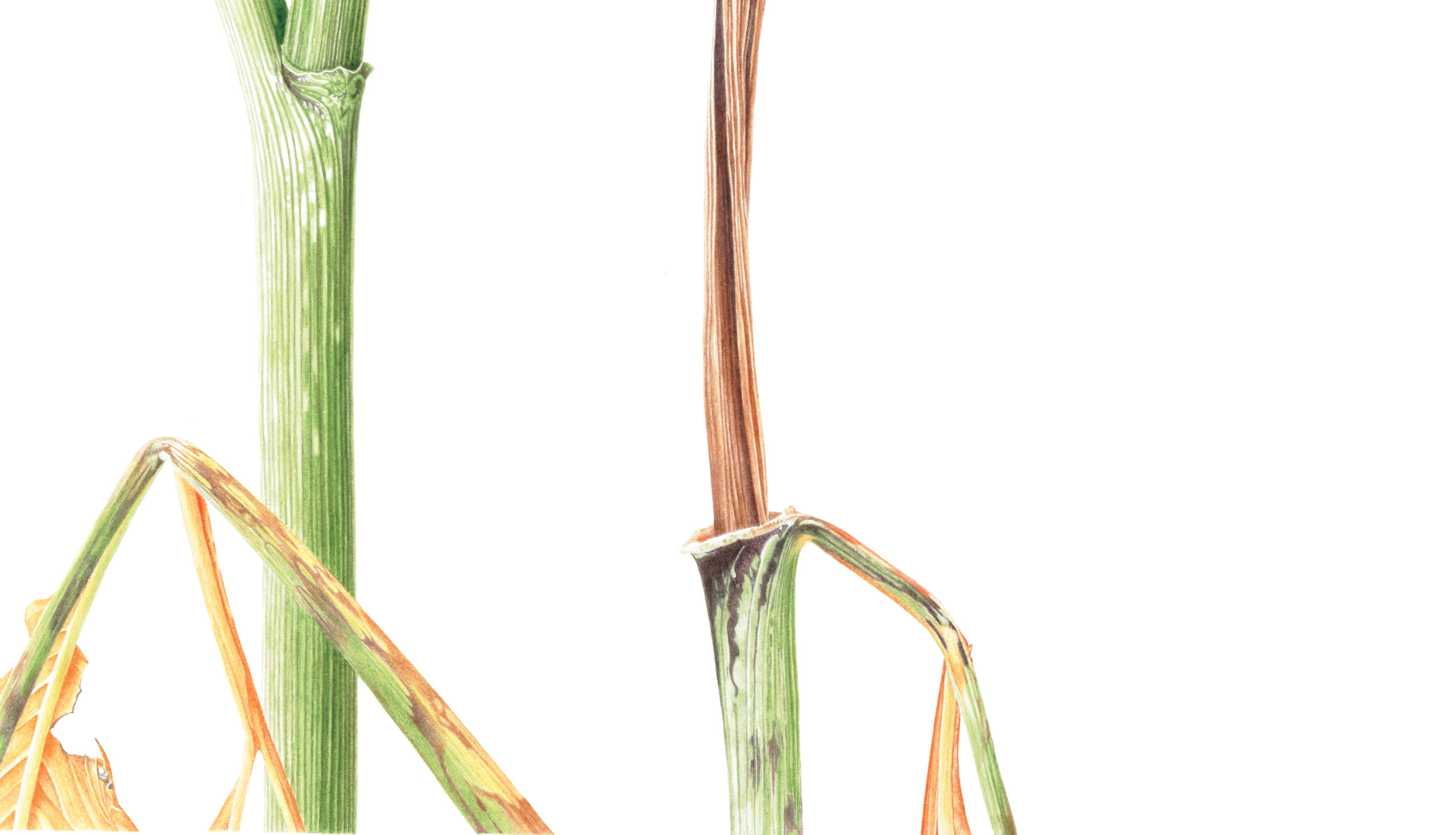Arisaema galeiforme Serizawa
Watercolour on Fabriano 5, framed in Oak
45cm x 32cm, framed to 70cm x 50cm
£4250 Enquire >>
An original watercolour painting of Arisaema galeiforme Serizawa, (a form of serratum). I watched this plant grow in my Edinburgh garden for two years before painting this specimen. Depicting two seasons of growth, the inflorescence and leaf from the summer months, and the fruit from the autumn season.
This plant was one of the earliest in my garden to ‘wow’ me with it’s beautifully dark inflorescence. Arisaema serratum tend to have a green flower and purple stems, A. galeiforme Serizawaone is the inverse, with its gorgeous chocolaty spathe and bluey green stems and leaves. The leaflet structure twists out to each side of the pedestal with a higher leaf and a lower leaf, the inflorescence points towards the upper leaflet. I love the delicately striped pseudo stems and the delicate junctions from which the next stem emerges. The mature plant in autumn decays slowly, with gorgeous colouring down the collapsing stems, and sterile fruits with an amazing twisted stem each former stripe providing the structure for the twist.
Botanical details
Japanese common name: Kanto-mamushi-so and Murasaki-ma-mushi-so. Kanto is a region in Japan. Mamushi is a Japanese pit viper, which could refer to the shape of the spathe-limb. Murasaki is the Japanese word for the colour purple. Section Pistillata Subsection Pedatisecta
A. serratum is a diverse species, which seems to still be in the process of grand polymorphism. According to Jin Murata from personal correspondance, A. galeiforme Serizawa may be called A. serratum in a broad sense.
Deciduous, to 150cm tall, 60cm wide, a wide distribution from Japan, China and Korea, preferring woodland conditions, often found growing with trilliums and violas and in Japan in Cryptomeria japonica forest (Japanese cedar, endemic to Japan, where it is known as sugi). Flowering period March to June, ripening September to November.
“The Genus Arisaema, A Monograph for Botanist and Nature Lovers“, Guy and Liliane Gusman, 2006, A.R.G. Gantner Verlag K.G. “Flora of Japan (in English)”, Jisaburo Ohwi, National Science Museum, Tokyo, Japan. A combined, much revised, and extended translation by the author of his FLORA OF JAPAN (1953) FLORA OF JAPAN— PTERIDOPHYTA (1957) Edited by Frederick G. Meyer Research Botanist, U.S. National Arboretum and Egbert H. Walker Research Associate, Smithsonian Institution SMITHSONIAN INSTITUTION WASHINGTON, D.C. 1965
© Marianne Hazlewood




